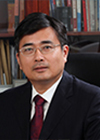

Sparse Radar Imaging Based on L(1/2) Regularization Theory
Abstract:It has been in great need of radar imaging under sampling rate of Nyquist’s for various earth observing applications. Compressed sensing provides a possible solution. It, however, reconstructs signals depending upon the use of observation matrix and requires much higher computation cost than conventional radar system, impeding its practical application. The awardees established an L(1/2) regularization theory, showing that L(1/2)- regularization can reconstruct sparse signals with much lower sampling rate, is the unique sparsest scheme with explicitly closed-form solution among L(p)(0<P<1)REGULARIZATIONS, P < applicability. general its showing astrophysics, and astronomy science, brain medical unmixing, hyperspectral processing, image learning, machine tracking, robot sensing, traffic urban control, optimization system power detection, circuit integrated signal seismic bioinformatics, communication, wireless imaging, molecular CT as such areas, many to applied successfully been already has theory regularization 2) L(1 The system. radar sparse based the of prospective bright feasibility support airborne with applications Experiments time. first in built was prototype principle a which system, evaluation design for developed further methodology diagram phase 3D A scenes. large use practical road paves thus algorithms, imaging existing compared O(N*log(N)), O(N^2) from iteration single complexity computational reduces simulator, echo while matrix observation referring directly without proposed also method simulator particular. new paradigm processing information novel provides solvers. fast admits>
 Awardee:ZONGBEN XU,A mathematician, expert in intelligent information processing and academician of CAS. Born in 1955, he received his PhD in applied mathematics in 1987 from Xi’an Jiaotong University, China. In 1987-89, he was a postdoctoral RF in the Department of Mathematics, The University of Strathclyde. He worked as RF or Visiting Professor during 1992-2000 at The Chinese University of Hong Kong, the University of Essex and Napoli University. He has been with Xi`an Jiaotong University since 1982, where he worked as associate professor, full professor and Chair professor, and served as Chair, Dean and VP. Since 2007, he has been appointed as a Chief Scientist of National Basic Research Program of China (973 Project). He currently serves as the president of Xi’an International Academy of Mathematics and Mathematical Technology, and the director of National Engineering Laboratory of Big Data Analytics. Dr. Xu is an awardee of the National Award for Science of China in 2007,the National Award for Scientific and Technological advancement in 2011; He is a winner of CSIAM Su Buchin Applied Mathematics Prize in 2008, and delivered a 45-minute lecture at the International Congress of Mathematicians (Hyderabad, 2010).
Awardee:ZONGBEN XU,A mathematician, expert in intelligent information processing and academician of CAS. Born in 1955, he received his PhD in applied mathematics in 1987 from Xi’an Jiaotong University, China. In 1987-89, he was a postdoctoral RF in the Department of Mathematics, The University of Strathclyde. He worked as RF or Visiting Professor during 1992-2000 at The Chinese University of Hong Kong, the University of Essex and Napoli University. He has been with Xi`an Jiaotong University since 1982, where he worked as associate professor, full professor and Chair professor, and served as Chair, Dean and VP. Since 2007, he has been appointed as a Chief Scientist of National Basic Research Program of China (973 Project). He currently serves as the president of Xi’an International Academy of Mathematics and Mathematical Technology, and the director of National Engineering Laboratory of Big Data Analytics. Dr. Xu is an awardee of the National Award for Science of China in 2007,the National Award for Scientific and Technological advancement in 2011; He is a winner of CSIAM Su Buchin Applied Mathematics Prize in 2008, and delivered a 45-minute lecture at the International Congress of Mathematicians (Hyderabad, 2010).
 Awardee:YIRONG WU was born in Beijing, 1963. He received his B.S. and M.S. degree from Beijing Institute of Technology in 1985 and 1988 respectively, and received his PhD degree from the Institute of Electronics, Chinese Academy of Sciences (IECAS) in 2001. He joined the IECAS in 1988, and is currently the director of IECAS. He was elected into the Chinese Academy of Sciences in 2007. The awards he received include National Science and Technology Progress Award (won the 1st award and the 2nd award in 2006), National Funds for Distinguished Young Scientists in 2007, Outstanding Scientists Award for National Defense Science and Technology in 2010, HLHL Advancement Prize in Science and Technology (2010), National Innovation Awards in 2017. His research field is electronics and information science and technology.
Awardee:YIRONG WU was born in Beijing, 1963. He received his B.S. and M.S. degree from Beijing Institute of Technology in 1985 and 1988 respectively, and received his PhD degree from the Institute of Electronics, Chinese Academy of Sciences (IECAS) in 2001. He joined the IECAS in 1988, and is currently the director of IECAS. He was elected into the Chinese Academy of Sciences in 2007. The awards he received include National Science and Technology Progress Award (won the 1st award and the 2nd award in 2006), National Funds for Distinguished Young Scientists in 2007, Outstanding Scientists Award for National Defense Science and Technology in 2010, HLHL Advancement Prize in Science and Technology (2010), National Innovation Awards in 2017. His research field is electronics and information science and technology.